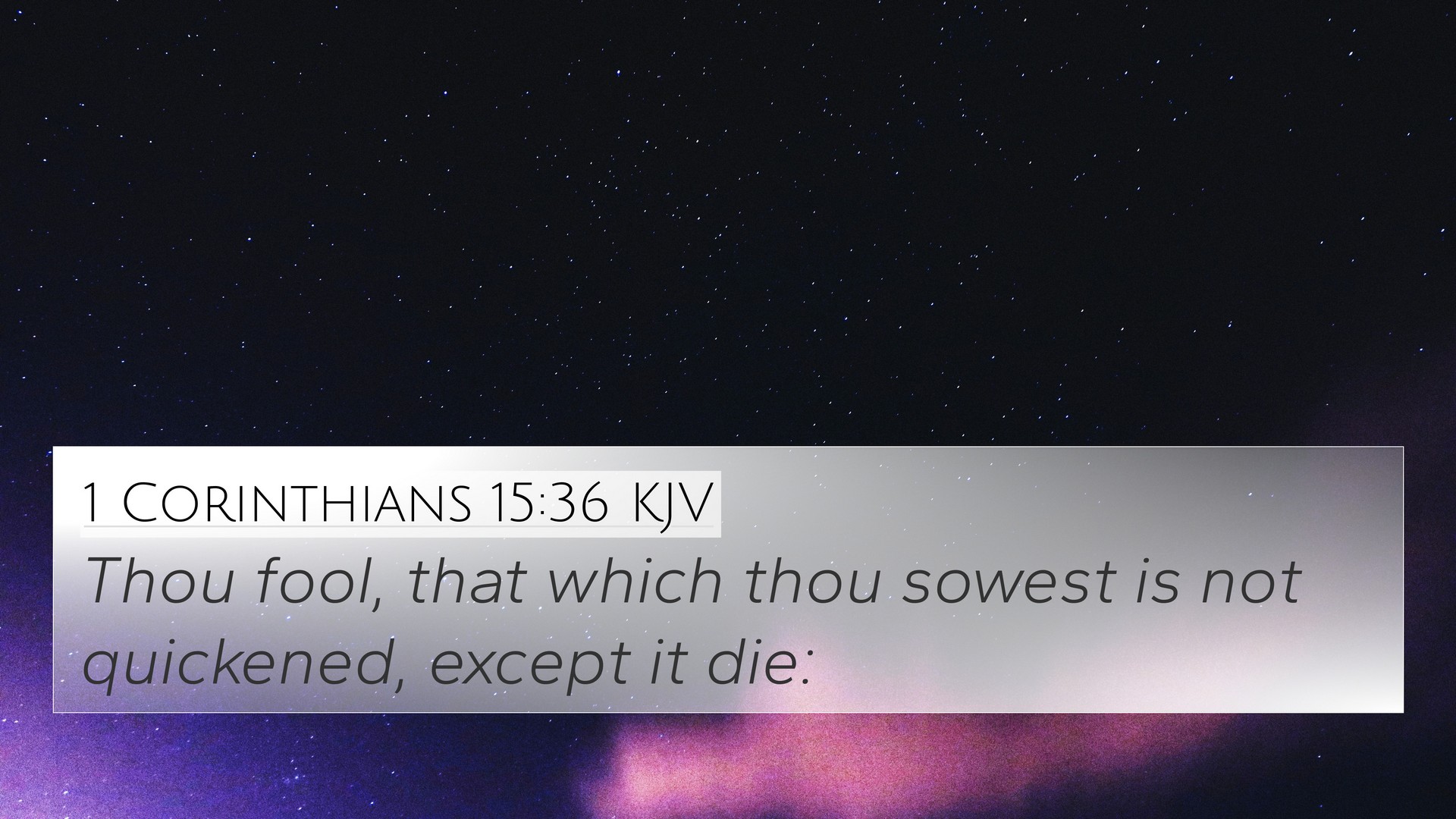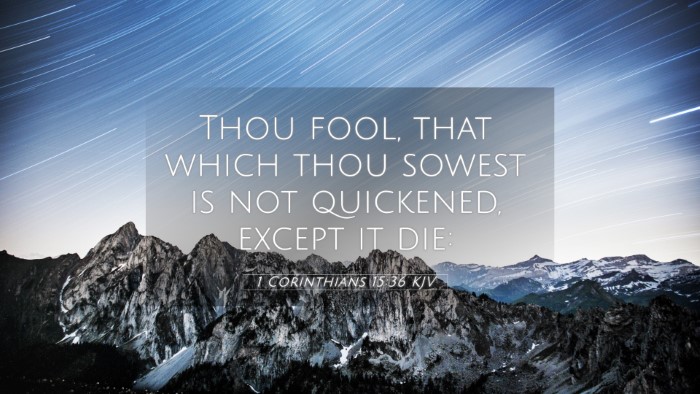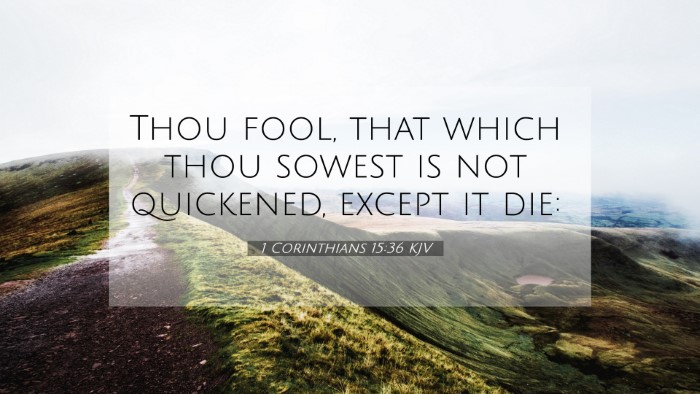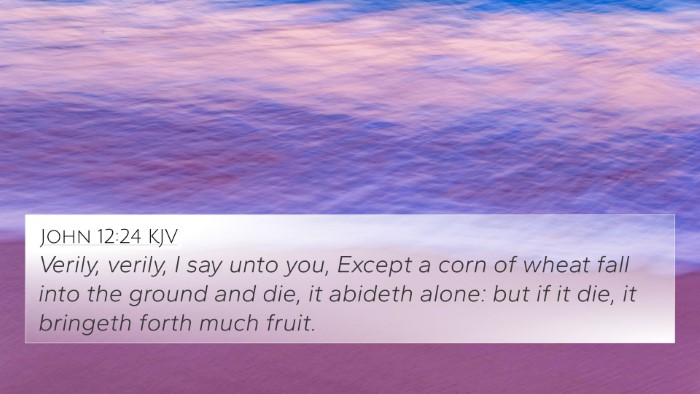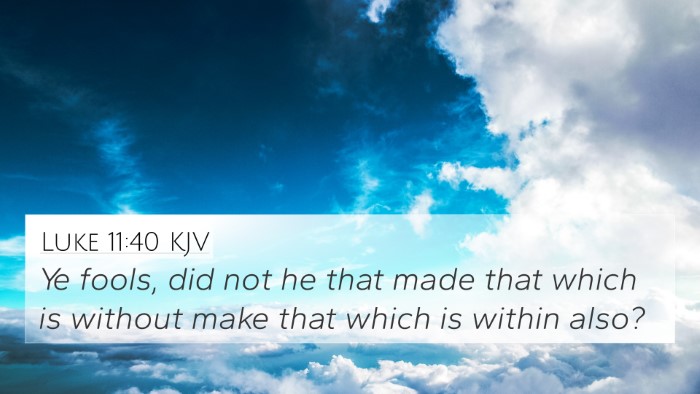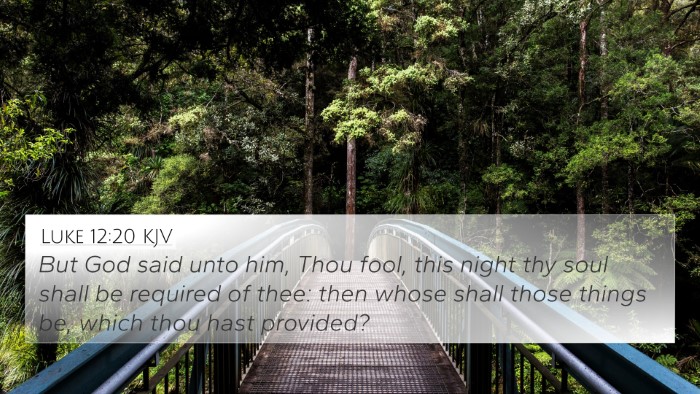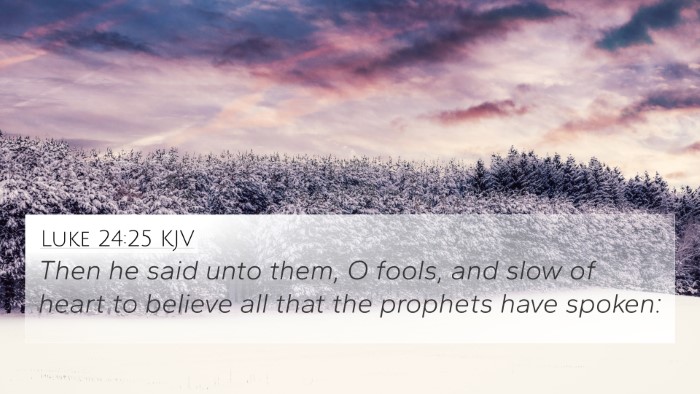Understanding 1 Corinthians 15:36
Bible Verse: 1 Corinthians 15:36 - "You fool! What you sow does not come to life unless it dies."
This verse is part of Paul's discussion on resurrection and emphasizes the transformative power of death leading to new life. The verse serves as a crucial component in Paul's broader argument about the resurrection of the dead, using agricultural imagery to illustrate spiritual truths.
Summary of Insights from Public Domain Commentaries
Combining insights from Matthew Henry, Albert Barnes, and Adam Clarke offers a multifaceted understanding of this passage:
-
Matthew Henry:
Henry suggests that Paul’s assertion highlights the necessity of death to achieve resurrection. He draws a parallel to nature, explaining that a seed must die to give rise to a new plant, thus illustrating God's design for physical and spiritual rebirth.
-
Albert Barnes:
Barnes emphasizes the idea of foolishness in misunderstanding the process of resurrection. He interprets the “fool” as the one who lacks insight into divine principles and the interconnection between death and life. His commentary invites readers to contemplate the spiritual implications of death and resurrection in Christ.
-
Adam Clarke:
Clarke discusses the idea that the physical body, like a seed, must die to be transformed into a glorified state. He elaborates on the concept of natural decay leading to a new creation, emphasizing the believer's hope in eternal life through Jesus Christ.
Thematic Bible Verse Connections
Several Bible verses resonate with the themes presented in 1 Corinthians 15:36. Below are some significant cross-references that deepen understanding of resurrection and transformation:
- John 12:24: "Very truly I tell you, unless a grain of wheat falls to the ground and dies, it remains only a single seed. But if it dies, it produces many seeds."
- Romans 6:5: "For if we have been united with him in a death like his, we will certainly also be united with him in a resurrection like his."
- Philippians 3:21: "Who, by the power that enables him to bring everything under his control, will transform our lowly bodies so that they will be like his glorious body."
- 2 Corinthians 5:17: "Therefore, if anyone is in Christ, the new creation has come: The old has gone, the new is here!"
- Colossians 3:3-4: "For you died, and your life is now hidden with Christ in God. When Christ, who is your life, appears, then you also will appear with him in glory."
- 1 Peter 1:3: "Praise be to the God and Father of our Lord Jesus Christ! In his great mercy, he has given us new birth into a living hope through the resurrection of Jesus Christ from the dead."
- Hebrews 11:35: "... women received back their dead, raised to life again. There were others who were tortured, refusing to be released so that they might gain an even better resurrection."
Comparative Bible Verse Analysis
The connections between these verses and 1 Corinthians 15:36 showcase a unified biblical narrative regarding death, resurrection, and new life in Christ. They illustrate a consistent theme throughout both Testaments about the hope and promise of transformation.
Cross-Referencing Biblical Texts for Deeper Understanding
To fully appreciate 1 Corinthians 15:36, utilizing tools for Bible cross-referencing can be incredibly beneficial. Here are a few methods:
- Bible Concordance: An alphabetical listing of biblical terms, helping to find related verses quickly.
- Bible Cross-Reference Guide: Books or online resources dedicated to linking scriptures together based on themes or keywords.
- Bible Reference Resources: Commentaries and study Bibles that include cross-references in the margins or footnotes.
User Intent and Practical Applications
The questions often asked by users such as, "What verses are related to 1 Corinthians 15:36?" or "Find cross-references for this verse" highlight the importance of understanding the interconnectedness of biblical truth. Cross-referencing Bible verses not only aids in insightful study but also enriches sermon preparations and personal reflections.
Conclusion
1 Corinthians 15:36 serves as a pivotal verse that encapsulates the divine principle of dying to live. The collective insights from commentary literature, supported by thematic connections to other scripture, provide a robust framework for understanding the resurrection promise that is central to Christian faith. Engaging in comparative Bible verse analysis deepens our understanding and encourages us to explore the profound truths that Scripture offers.
